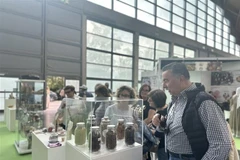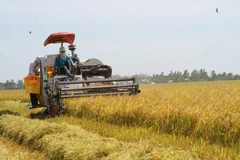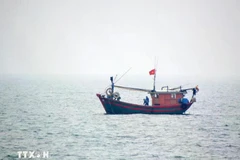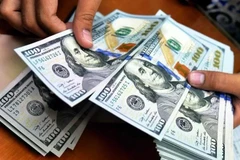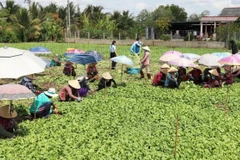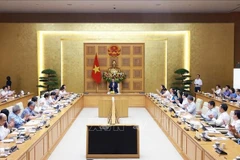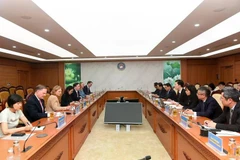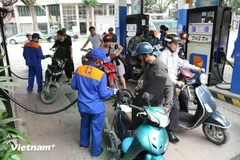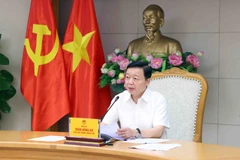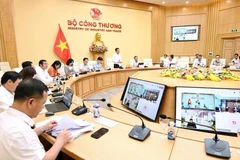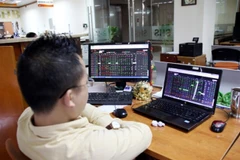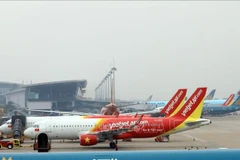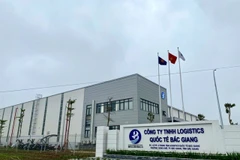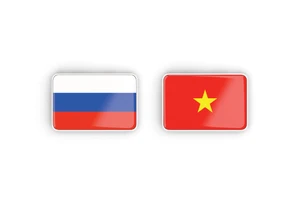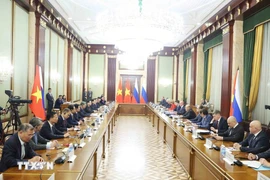Minister Bui Quang Vinh made the statement at a conference in Hanoi onFeb. 17 held to review the construction and development of IZs, EPZs andEZs over the past two decades and to find solutions for their furtherdevelopment.
"Since the establishment of Tan Thuan EPZ in 1991, thecountry is now home to 267 IZs and EPZs which are responsible for around40 percent of the total foreign direct investment (FDI) registered inVietnam, over 30 percent and 20 percent of the country's totalindustrial production and export value, respectively, and provide jobsto more than 1.6 million labourers," he said.
Figures from the ministry reveal that the zones cover an area of around 76,000ha, of which 46,000ha has been rented.
Bythe end of last year, the zones had attracted 4,113 foreign-investedprojects with 59.6 billion USD in registered capital. FDI disbursementin the zones was 27 billion USD, reaching 45 percent of the totalregistered capital during the past 20 years.
FDI flows in the zoneshave also accounted for 35 to 40 percent of the country's annuallyregistered capital while FDI for industrial production has made up 80percent of the total investment in Vietnam's industry.
Vinh also saidthe zones had contributed 32 percent to industrial production value and25 percent to export turnover, paying 5.96 billion USD to the Statebudget.
Last year alone, 6.7 billion USD in FDI was registered in the zones while 7.28 billion USD was dispersed.
"However,development of the IZs, EPZs and EZs has revealed shortcomings inplanning, policies and mechanisms, low technology levels anddifficulties in land clearance and infrastructure development," saidNguyen Van Trung, the deputy minister.
Trung added that environmentalshortcomings remain in IZs despite improvements. Dozens of IZ-basedenterprises have not seriously abided by environmental protection lawswhile State agencies have collaborated in environmental monitoring andsupervision has been lax, he said.
Participants also discussed other shortcomings.
Chairmanof HCM City People's Committee Le Hoang Quan said the city andneighbouring provinces such as Dong Nai and Binh Duong had severalhundred IZs and EPZs.
"However, most of them were not linked to theregion's economic situation or the network of universities and colleges,making their support industries weak," Quan said.
Do Thu Hang,chairwoman of the Development of Bien Hoa Industrial Zones Corporation's(SONADEZI) management board, said tax and preferential policies in someIZs are not as attractive as those outside, meaning investors tended torent land outside the zones to enjoy lower prices.
"For example, IZs in Dong Nai province attracted 41 FDI projects in 2008 but only six the following year," she added.
Chairwomanof the Vietnam Investment and Development Group Nguyen Thi Nguyet Huongsaid several localities have applied high rent prices, boosting thembeyond investor thresholds.
In addition, bank loan interest rates forinvestment in the zones is high because they are considered real estateloans, she said.
Speaking at the conference, Deputy Prime MinisterHoang Trung Hai said development of the zones has not reached thepotential offered by the land or met the established targets.
Haiurged the ministry and localities to focus on three key factorsincluding infrastructure, labour training and legal mechanisms toincrease the occupation rate in the zones to 70 percent by 2015 for anindustrial production value contribution of 50 percent.
The deputy PMasked the ministry to establish a central steering committee on theissue to resolve shortcomings and difficulties, especially inimplementing big projects.
He said the Government will review the zones' planning in the near future and cease to approve new projects.
The Government will strictly forbid using rice cultivating land to build IZs./.

